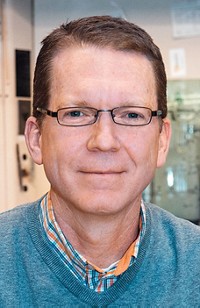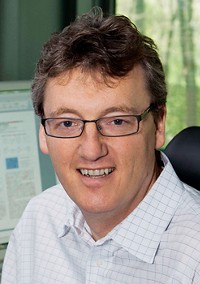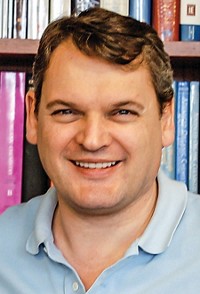Advertisement
Grab your lab coat. Let's get started
Welcome!
Welcome!
Create an account below to get 6 C&EN articles per month, receive newsletters and more - all free.
It seems this is your first time logging in online. Please enter the following information to continue.
As an ACS member you automatically get access to this site. All we need is few more details to create your reading experience.
Not you? Sign in with a different account.
Not you? Sign in with a different account.
ERROR 1
ERROR 1
ERROR 2
ERROR 2
ERROR 2
ERROR 2
ERROR 2
Password and Confirm password must match.
If you have an ACS member number, please enter it here so we can link this account to your membership. (optional)
ERROR 2
ACS values your privacy. By submitting your information, you are gaining access to C&EN and subscribing to our weekly newsletter. We use the information you provide to make your reading experience better, and we will never sell your data to third party members.
Education
Herbert C. Brown Award For Creative Research In Synthetic Methods
by Matt Davenport
February 16, 2015
| A version of this story appeared in
Volume 93, Issue 7
Sponsored by the Purdue Borane Research Fund and the Herbert C. Brown Award Endowment
A combination of enthusiasm and an explosion first got Gary A. Molander interested in chemistry. Molander recalls watching his ever-enthusiastic high school teacher stick a bit of sodium to a paper clip. The teacher then slid the clip down a string running from the classroom’s second-story window into a bucket of water waiting on the ground.
“Of course, that creates this huge explosion,” Molander says, and it left a big impression on him. “That, my teacher’s enthusiasm for chemistry, and just the idea of being able to make things really piqued my interest.”
Molander now works to share his own interest in and enthusiasm for chemistry with his students as a professor of chemistry at the University of Pennsylvania. But that enthusiasm stems more from his appetite for creation than it does combustion.
In his laboratory, Molander has devised elegant yet relatively simple solutions for some of the more challenging problems in synthetic organic and organometallic chemistry, his colleagues say. Molander, they say, owns a large share of the responsibility for driving the widespread use of reagents and catalysts that organic chemists might otherwise eschew, such as lanthanide compounds and trifluoroborate salts. His innovative techniques have opened new doors for synthetic chemists in labs in both academia and industry.
“It is hard to think of anyone more deserving of this award,” says Stephen L. Buchwald, a chemist at Massachusetts Institute of Technology who studies and develops catalytic processes. “Molander does a great job of thinking about the field and how to overcome limitations that currently exist.”
For instance, a popular class of palladium-catalyzed reactions—which helped earn Akira Suzuki a share of the 2010 Nobel Prize in Chemistry—traditionally relied on boronic acids. These acids, however, tend to be unstable and difficult to purify. Molander demonstrated how more robust trifluoroborate salts could be substituted for the acids to yield a variety of desired products.
“I’m always really happy when I go someplace and somebody tells me I saved them three months or six months in their Ph.D. because of some reagent or process we developed,” Molander says. His techniques have also aided industry in making chemicals for commercial purposes, such as pharmaceuticals or agricultural products. Some of the reactions he’s helped develop have been used in industry to synthesize tens or hundreds of kilograms of products. When you see that, he says, “you feel like you’re making a difference.”
Yet he says some of the most important products of his research are the knowledge and the passion he tries to pass on to his students. Molander is in a unique position to appreciate the value of a good mentor: Not only did one get him interested in chemistry in the first place, but he’s now accepting the award named for his doctoral adviser at Purdue University. Molander hopes his own work will continue to inspire his students to pursue chemistry and push the field forward.
“What you’re doing in research, you can bring it into the classroom and excite people about chemistry,” he says. “The further I go along in my career, the more enthusiastic I am about teaching.”
Molander will present his award address before the Division of Organic Chemistry.






Join the conversation
Contact the reporter
Submit a Letter to the Editor for publication
Engage with us on Twitter